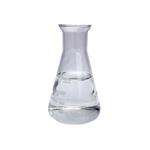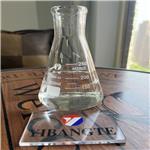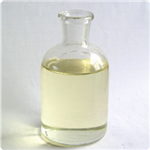Chemical Properties
3-(Methylthio) propionaldehyde has a powerful, onion, meat-like odor. It has a pleasant, warm, meat and soup-like
flavor at low levels
Chemical Properties
CLEAR COLOURLESS LIQUID
Occurrence
Reported found in potato, potato chips, asparagus, tomato, tomato paste, wheat and rye bread, many cheeses,
boiled egg, meats, hop oil, beer, malt whiskey, cocoa, coffee, roasted filberts and peanuts, popcorn, baked potato, cooked chicken,
oatmeal, passion fruit, beans, mushroom, macadamia nut, tamarind, parsnip root, jackfruit, pumpkin, sweet corn, dried bonito, krill,
shrimps, crayfish and scallops
Uses
3-Methylthiopropionaldehyde is a synthetic flavoring agent that
is a colorless to light yellow liquid with an intense meat odor. it
polymerizes with age and is stable in a 50% alcohol solution. it
should be stored in glass containers. it is used at low concentrations
for meat and broth flavors for applications in meats and condiments
at 3 ppm and in baked goods and beverages at 0.5 ppm.
Uses
3-(Methylthio)propionaldehyde, is used as food flavour ,for making Baked food, spices, soft drinks, candy. It is also used as an intermediate. It has wide applications in organic synthesis as solvents as well as reagents. They are used in the synthesis of specific compound classes include agricultural chemical, property-enhancing additives, pharmacological drugs, chemical resistant polymers, detergents, and rubber antioxidants. Some examples of aliphatic and aromatic thioethers found in flavouring agents
Definition
ChEBI: 3-methylthiopropanal is an aliphatic sulfide. It has a role as a prostaglandin antagonist. It is functionally related to a propanal.
Preparation
By transamination and decarboxylation of various amino acids; by oxidation of the alcohol
Aroma threshold values
Aroma characteristics at 0.1%: vegetable oil, creamy tomato, potato skin and French fry, yeasty, bready,
limburger cheese with a savory meaty brothy nuance
Taste threshold values
Taste characteristics at 5 ppb to 5 ppm: potato, musty, tomato, mold ripened cheeses, onion, beefy brothy,
egg, seafood and vegetative nuances.
Synthesis Reference(s)
Journal of the American Chemical Society, 70, p. 1450, 1948
DOI: 10.1021/ja01184a044
General Description
A colorless to amber liquid with an extremely foul and persistent odor. Slightly soluble in water and denser than water. Contact may slightly irritate skin, eyes and mucous membranes. Moderately toxic. Used as a food additive.
Air & Water Reactions
Slightly soluble in water.
Reactivity Profile
Organosulfides, such as 3-(Methylthio)propionaldehyde, are incompatible with acids, diazo and azo compounds, halocarbons, isocyanates, aldehydes, alkali metals, nitrides, hydrides, and other strong reducing agents. Reactions with these materials generate heat and in many cases hydrogen gas. Many of these compounds may liberate hydrogen sulfide upon decomposition or reaction with an acid.
Health Hazard
Highly toxic, may be fatal if inhaled, swallowed or absorbed through skin. Contact with molten substance may cause severe burns to skin and eyes. Avoid any skin contact. Effects of contact or inhalation may be delayed. Fire may produce irritating, corrosive and/or toxic gases. Runoff from fire control or dilution water may be corrosive and/or toxic and cause pollution.
Fire Hazard
Combustible material: may burn but does not ignite readily. Containers may explode when heated. Runoff may pollute waterways. Substance may be transported in a molten form.
Flammability and Explosibility
Not classified
Biochem/physiol Actions
Taste at 0.5-1ppm
Safety Profile
Moderately toxic by
ingestion. When heated to decomposition it
emits toxic vapors of SOx.
Synthesis
3-(Methylthio)propionaldehyde's synthesis method is as follows: (in Nature) by transamination and decarboxylation of various amino acids






